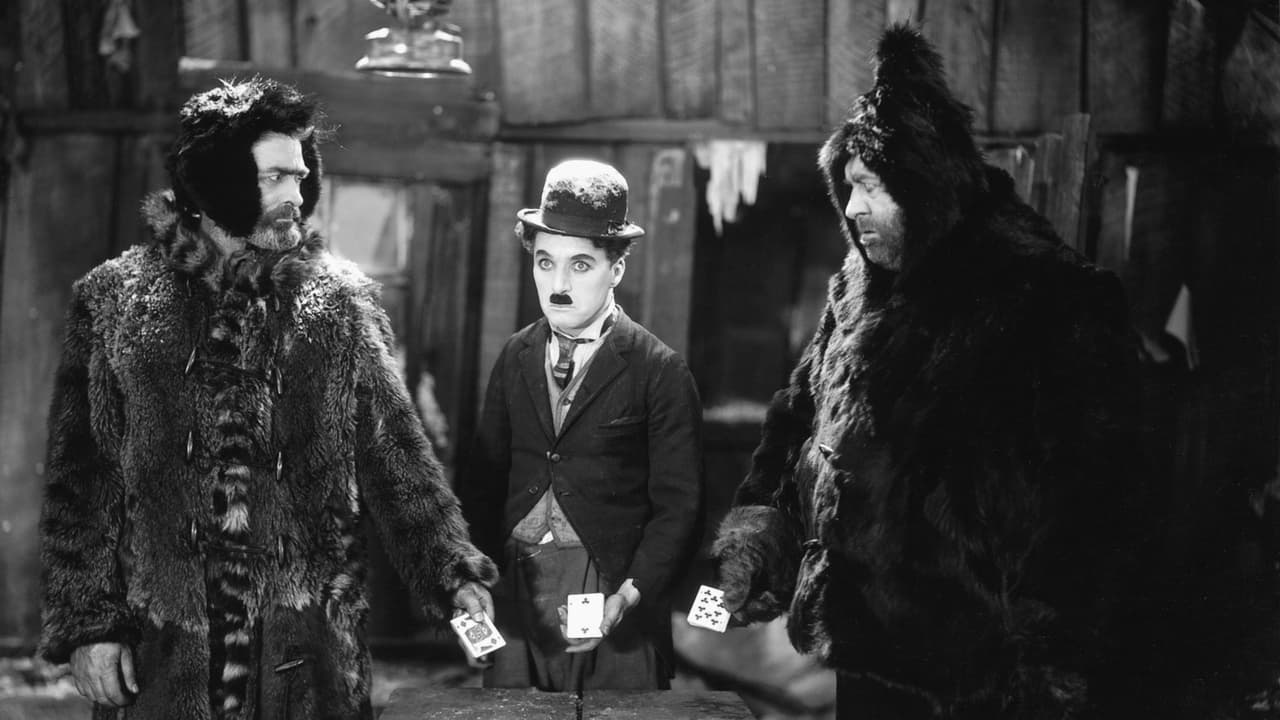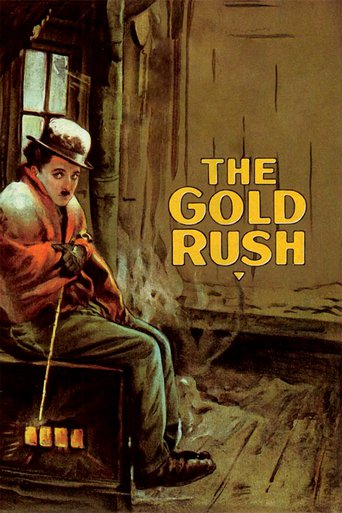Nessieldwi
Very interesting film. Was caught on the premise when seeing the trailer but unsure as to what the outcome would be for the showing. As it turns out, it was a very good film.
Beulah Bram
A film of deceptively outspoken contemporary relevance, this is cinema at its most alert, alarming and alive.
Roxie
The thing I enjoyed most about the film is the fact that it doesn't shy away from being a super-sized-cliche;
TobinTelleran
It is truly amazing that Chaplin is able to deliver such a remarkable performance and tell a great tale through acting and visuals alone.There are some truly great scenes where he brings all of his skill to light.At 135 mins I thought that this was going to be a slog but the pacing is perfect and the story is intriguing.Chaplin's best film in my opinion.
sq-55410
Charlie Chaplin is a film legend known for his silent pictures, so it was interesting to watch the 1942 reissued version of his 1925 film "Gold Rush" with narration.Chaplin's lovable, goofy character, "The Tramp", as he refers to him, is a lonely prospector looking for gold during the California Gold Rush. He is not alone in a quest to find fortune and fame as he is trapped in a cabin with two other prospectors - Mack Swain as "Big Jim" and Tom Murray as "Black Larsen". Since it is a Chaplin film, comedic antics ensue as these characters wait out a brutal winter storm, such as "The Tramp" and "Big Jim" eating a shoe. A town has been established nearby where "The Tramp" meets and falls for "Georgia" (Georgia Hale), a dance hall worker who has a brute of a suitor named "Hank" (Henry Bergman). This creates a shift in tone and character goals as "The Tramp" then tries to become rich in order to win the affections of "Georgia". More comedic antics, such as the cabin tilting on the edge of a cliff, occur before "The Tramp" and "Big Jim" are successful in striking gold. The film ends with rich and famous "The Tramp" coincidentally crossing paths with "Georgia" on a ship with her accepting him for who he is and not his wealth.This film is an example of cinematic realism because it is authentic in the story matter and style. The plot takes place during the California Gold Rush to characters who could be real. Nothing is overly dramatized in the sense that it could not have actually happened in real life. However, one possible exception would be "The Tramp" and "Big Jim" trying to escape the tilting cabin as it teeters on the edge of a cliff hanging by a rope.The films of the 1920s seem to be thought of as rudimentary, in terms of lacking cinematic creativity with the kinetic motion being concrete and literal. However, this film incorporates techniques used in more modern era films, as well. For instance, previous films were shot specifically with characters and action framed by long and medium shots at eye-level. In contrast, films like this one also included close-ups and point-of-view shots to better see and understand the characters' expressions and emotions. This is especially evident with the more complex emotions - Georgia feeling guilty for not showing up to the party thrown by "The Tramp"or the weary, exhausted faces of the starving "Tramp" and "Big Jim". Close-up shots are also useful for any sort of action like when "Georgia" lifts up "The Tramps" pillow to find the tattered picture of her and the flower she gave when the night they danced. The viewer would not get the same feelings of secret, unrequited love if the shot was done farther away.The (dubbed) narration both added and took away from the film, depending on the circumstances of the scene. One example of addition was when a reporter asked "The Tramp" was asked about his relationship with "Georgia", to which the response was a whispered "Buzz, buzz, buzz" - unexpected and comical. In contrast, one example of the narration taking away was describing obvious character expressions and actions. For instance, the narration of a character saying "Get over there" and pointing in that direction with a gun is essentially redundant and pointless because the viewer can tell that that's what the character wants based on the visual context.Chaplin's updated version of "Gold Rush" is the epitome of classic cinema. It has the right amount of character development, meaningful action, and comedic timing that is not forced. It is the perfect "rags to riches" and "underdog achieves his dreams and gets the girl" film that will always be relevant.Sources:Giannetti, Louis. Understanding Movies. Boston, Pearson, 2016. Accessed 28 September 2017."The Gold Rush (1925)". IMDb, 2017. http://www.imdb.com/title/tt0015864/? ref_=nv_sr_2.Accessed 28 September 2017.
mbs-65614
I am not usually one to like silent films, but I very much enjoyed Gold Rush. Granted, I have watched only the 1942 re-release with background music and Chaplin's narration, so one might say that the movie I watched was not truly silent, but none of the characters really had voices and there were no sounds otherwise recorded while filming, so I am going to still consider it a silent film. But I digress. From start to finish Gold Rush is a charming, funny and overall entertaining film borne of the genius of Charlie Chaplin. For the most part, the remarkable qualities of this film are not to do with the cinematography, but the acting and on screen charisma of Chaplin (and the other actors too I guess). Although there are certain examples of cinematic excellence. One shot that really stood out to me is when the Tramp first gets to the dance hall that Georgia works at. He stands in the foreground facing away from the camera while the rest of the hall, which is visible past him, is alive with music and dancing. Although I suppose it was due in part to Chaplin's acting, how forlorn the Tramp looked was conveyed in this scene largely, I think, by the cinematography, from the angle (slightly below eye level) to the lighting (contrast between him, who was standing in the dark, and the rest of the well lit room) to the music (bright and cheery, in line with the rest of the room). Even the re-release of the film with its narration largely left telling the story up to the actors and only interjected when necessary. There were some parts, especially at the beginning, when the narration is a bit much and it would be describing things that were obvious to the viewer. But, I think this is outweighed by its value when later on in the film it explains things that I myself would not have understood otherwise. For example, when Big Jim wakes up from being knocked out by Black Larsen he just kind of get up and runs at the camera with a crazed look on his face. Had the narrator not said it, I don't know if anyone could have deciphered that Jim had developed amnesia and couldn't remember where he was or how he got there. In addition to knowing when to speak, the narrator also knew when not to say anything. In the scene when the Tramp and Big Jim are forced to eat the boot, Chaplin lets the acting do the talking. As are many other silent films, Gold Rush is very melodramatic. Typically in the melodramatic the plot is meant to appeal to the heightened emotions of the audience. In the case of Gold Rush, the actors themselves appear to have that heightened emotion, likely because without it it would be very difficult for the audience to be able to discern what is happening (with it being a silent film and all), but also to evoke an emotional response from the audience. In the scene with the boot, Big Jim is clearly not happy and has a grimace on his face for most of the scene. The Tramp, however, tries to make the best of it and though it is not said explicitly, it is obvious that he is treating the boot laces as though they were spaghetti, all through the melodramatic conveying of heightened emotions. This elicits a response of pity from the audience for we can see what a terrible time they are having eating the boot.Maybe it's the pure charisma of Chaplin at work, or maybe it's my own personal bias putting unnecessary weight on the fact that there is narration and background music, but Gold Rush is, in my opinion, the best silent film I have ever seen and perhaps even one of the best films in general.
sol-
Improperly prepared for Klondike's harsh weather conditions, a lone gold prospector has to share a cabin with another prospector, whose hunger often drives him insane, in this Charles Chaplin silent comedy. Proclaimed by Chaplin as the film by which he most wanted to be remembered, 'The Gold Rush' has gone onto much acclaim, but those expecting the charm of 'City Lights' and imaginative sets and situations of 'Modern Times' may be disappointed. To be fair, 'The Gold Rush' starts off quite well with lots of humorous situations at the outskirts cabin, including imagined chickens, persons blown in and out of doorways and a hilarious sequence in which Chaplin keeps trying to dodge a gun barrel during a fight, only to find the gun pointed in his face wherever he goes. Around a third of the way in though, Chaplin leaves the cabin and what follows is far less innovative as he becomes the subject of tricks and falls in love upon returning to town. There are some funny town sequences for sure (dancing with a dog leash) and there is a great bit involving a tilting cabin near the end, but the final two thirds of the film never recapture the magic of the first third. With so many jokes and ideas that have since been imitated (bread roll forks), this is an undeniably iconic comedy, but those keen on seeing Chaplin at his finest may wish to look elsewhere.

